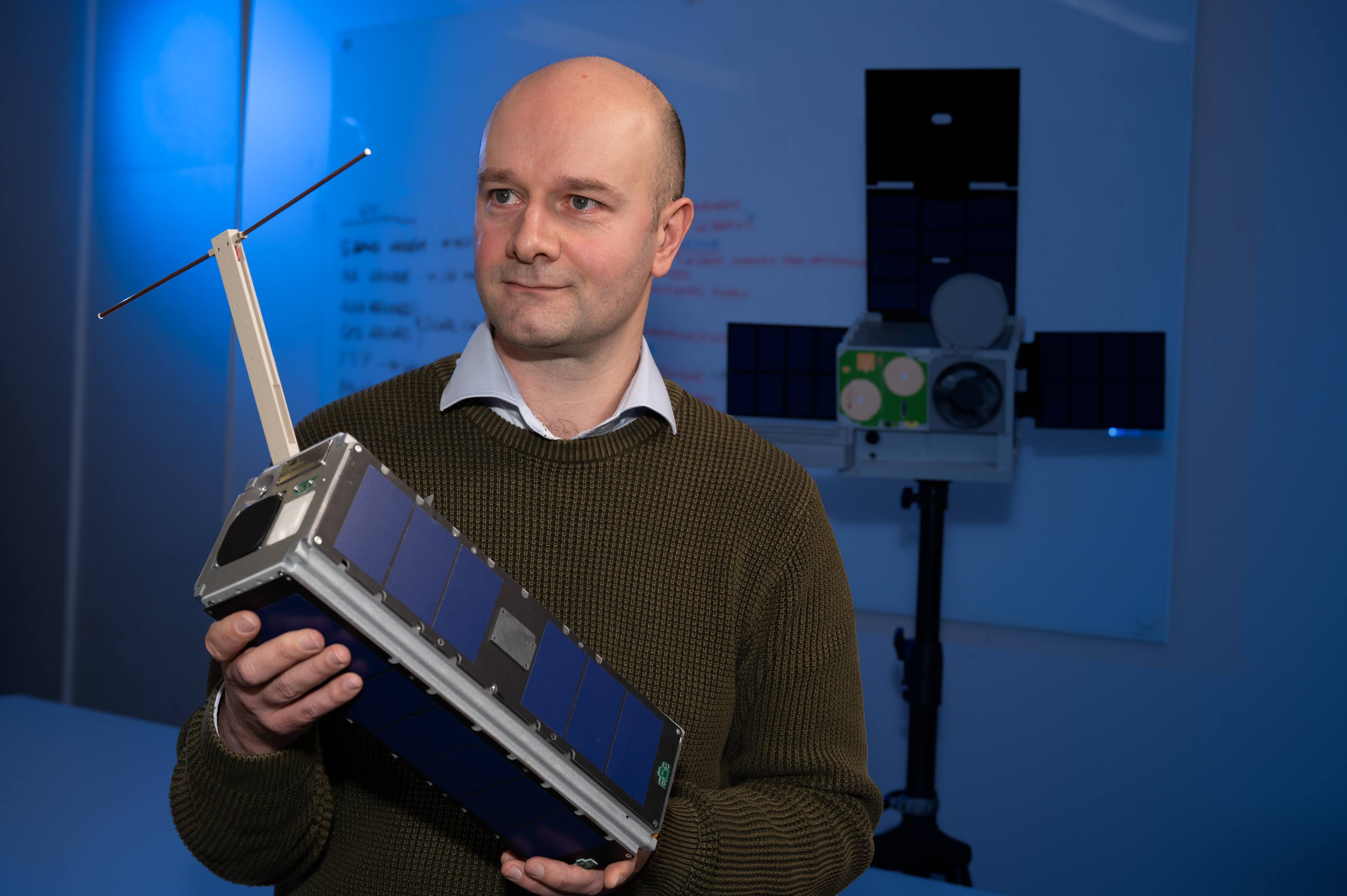Ensuring a safe, reliable and sustainable space domain
Growing up in a small Scottish town of 1500 people, Dr Melrose Brown never imagined he would play a key role in Australia’s space sector.
Growing up in a small Scottish town of 1500 people, Dr Melrose Brown never imagined he would play a key role in Australia’s space sector.

Growing up in a small Scottish town of 1500 people, Dr Melrose Brown never imagined he would play a key role in Australia’s space sector.
Now, as UNSW Canberra’s Space Domain Awareness lead, Dr Brown has come a long way from the kid who was always fascinated by “things that moved really fast”.
“A lot of low fly fighter jet training used to happen over my head growing up – so I would always see these as a kid and wanted to be involved in designing and making them,” Dr Brown said.
“And things kind of snowballed from there – but I initially thought I would work on planes and then I ended up working on helicopters and scramjets, and then eventually satellites and working in space domain awareness.”
As part of the founding UNSW Canberra Space team, Dr Brown has been heavily involved in developing Australia’s sovereign space capabilities over the last six years.
“When we speak about advancing Australia’s sovereign space capabilities, what we are actually referring to is increasing Australia’s ability to access and creatively use space to make a positive contribution to the lives of all Australians,” Dr Brown explained.
“This point is crucial towards improving global security; meaning we will have greater opportunity to contribute to technology and shape global policy to ensure safe, reliable, and sustainable use of the space domain into the future. Not only that, there are also real commercial benefits on a domestic scale.”
Space technology will likely affect all sectors of government in some way in the future.
“It’s really critical that we get our space game right so that we can connect future online communities across Australia and keep pace with global space efforts,” Dr Brown said.
As the Space Domain Awareness lead, Dr Brown examines the number of objects in orbit around earth, understanding the complex and dynamic environment these objects orbit in and how they interact within that environment.
“If we remember a decade ago Australia didn't really have anything in space – but things are different now,” Dr Brown said.
“Our team is currently looking to put really important things in space that are going to be essential for things like mitigating future bushfires, and there is also the defence side of space, and the economic benefits that can be gained from that.”
Dr Brown said future missions can be put at risk if Australian space programs are not aware of what is currently in orbit and how best to navigate in a space environment.
“Since the first satellite was launched into orbit in 1957, there have been over seven thousand satellites that have made it into orbit, with just over 2000 of those active today,” Dr Brown said.
“However, by the end of the decade that number will rise to somewhere between 20,000 and 100,000.
“We have no way to change that – so having the ability to watch things happen with sensors is one part of space domain awareness. But the other really important bit is having algorithms that can warn us of trouble ahead, combined with satellite technology that let us do something about it.”
As the use of space accelerates, building our future space workforce is key to ensuring Australia can meet the challenges ahead.
“That’s why our research informs our space education programs,” Dr Brown said.
“Job opportunities in the sector are only going to increase and we’re committed to training the next generation of space professionals.”
To find out more about our postgraduate courses and research opportunities, visit the UNSW Canberra Space page.